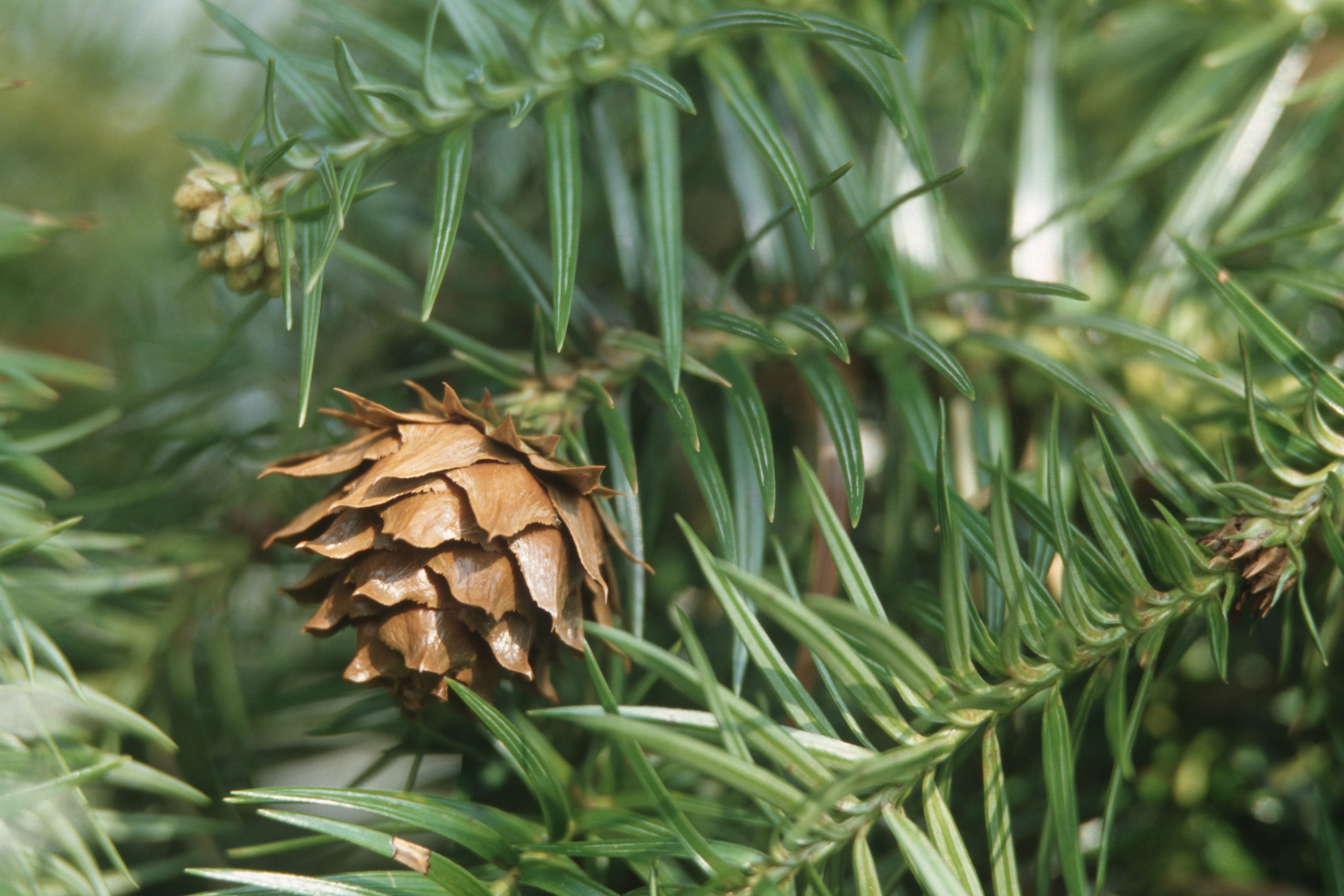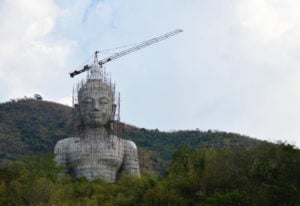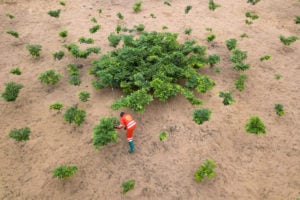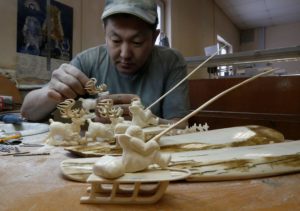The China fir (shanmu, or Cunninghamia lanceolata) is a relict species from the late Mesozoic, a tree from the age of the dinosaurs, a survivor of climate change that drove most of its near relatives to extinction. Yet while this tree is an ancient survivor, its greatest success came in the last thousand years. Now one of the most ubiquitous trees in southern China, the reasons for the fir’s success have less to do with its prehistoric past than with a novel relationship to humans. People noticed and appreciated some of the tree’s natural characteristics: its straight, rapid growth; its wood’s resistance to rot; and its ability – rare among conifers – to trunk-sprout. Finding these traits desirable in a timber tree, humans took control of the fir’s entire lifecycle, from seedling to sapling to stump. Starting around 1100, and with growing range and intensity after 1500, landowners planted firs to replace much of the natural-growth woodland in southern China.
The techniques for planting trees were known long before 1100. They are attested in writing by the sixth century and were probably known in deep antiquity. Yet until the 11th or 12th centuries there were still extensive naturally seeded woodlands that provided more than enough fuel and lumber for most everyday needs. It was only with newfound pressures on the wood supply during the Song dynasty – urbanisation, warfare, dike construction, trade – that fears of wood scarcity gave people an incentive to plant trees widely, as a source of profits and a strategic resource. Both the state and private landowners experimented with more intensive forest oversight, but ultimately the profit motive proved stronger than the impetus toward good government. State forestry died and was largely forgotten in China until the 20th century; private, commercial forestry survived and spread.
Around 1200, Huizhou (present-day southern Anhui) and western Zhejiang emerged as the epicentre of the new commercial forestry. Planters and merchants grew wealthy supplying timber to the cities of the Yangtze River Delta and fuel to Jingdezhen’s porcelain kilns. They developed organisations to manage risks of fire and theft, and a shareholding system to share the costs and risks of plants that took 30 years or more to mature, and to allow planters to cash out their investments early. By the mid 1500s fir plantations had spread to central and western Jiangxi, northern Fujian, and most of Zhejiang and Jiangnan; by the mid 1700s they spread to central Hunan and northern Guangdong, eventually reaching eastern Guizhou and parts of Sichuan and Guangxi. Human vectors enabled fir trees to colonise the interior south: merchants from Huizhou provided most of the capital, market access, and business practices; Hakka migrants from Fujian and Jiangxi provided most of the labour for planting and logging; the cuttings and seedlings of the fir itself were carried over the mountains by human porters. Ironically, the scientific name for this tree – native to southern China, and spread by southern Chinese diasporas – refers not to a Huizhou merchant or a Hakka labourer, but a British doctor, James Cunningham, who introduced it to the West, where it is in limited cultivation as an exotic.
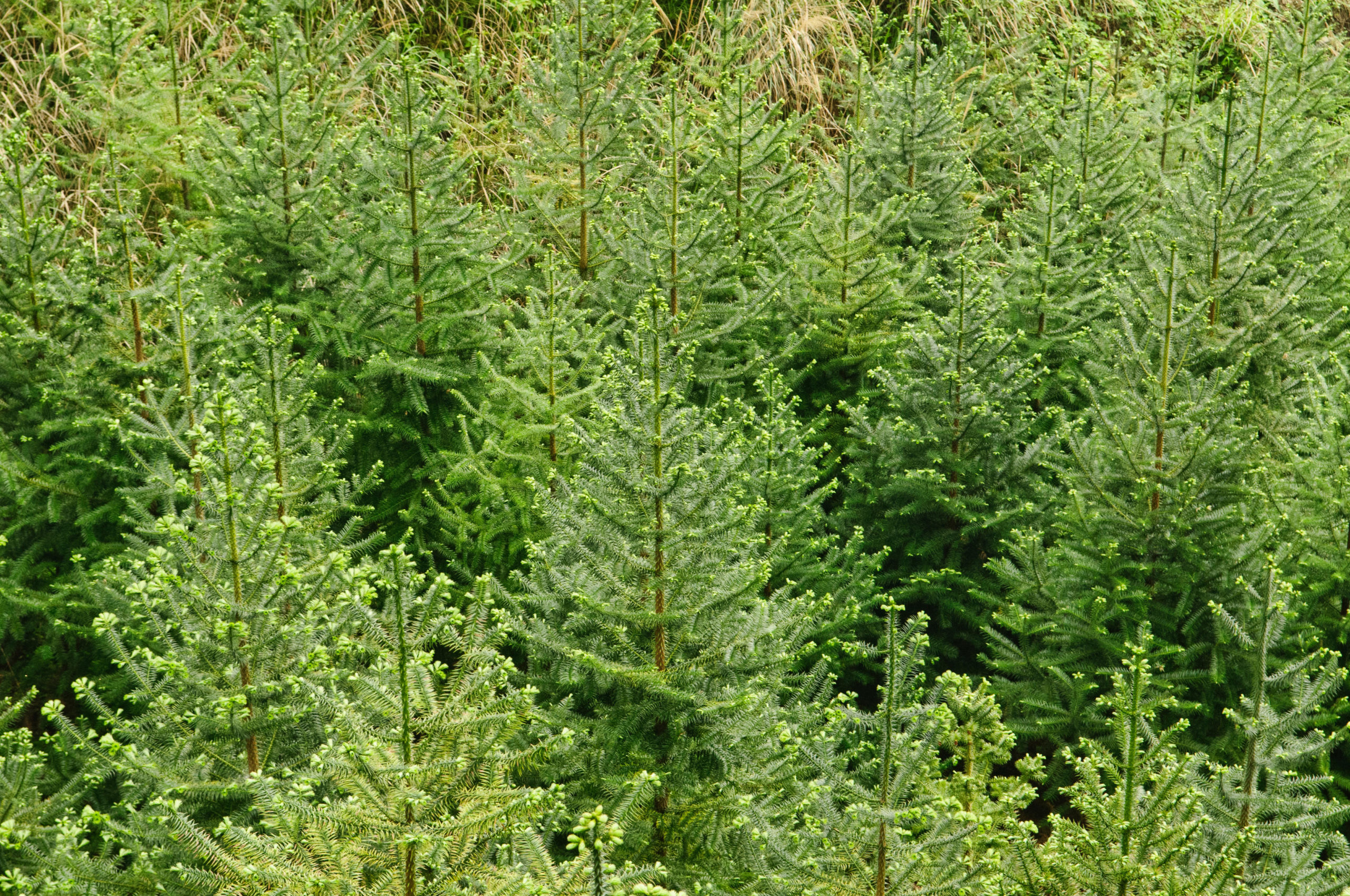
While the Chinese state was not a key actor in the spread of the fir tree, it nonetheless played an integral role in the viability of commercial forestry. Official recognition of contracts and land registration was critical to the development of private ownership of forests, without which foresters could not have hoped to profit from the trees they planted. State market oversight gave preferential treatment to fir logs and lumber because they are ideal for ships’ masts, planks and general construction. The state favoured fir timber for official shipbuilding and levied lower tariff rates on this species than on most other types of timber. In the southwest, state logging teams intent on supplying massive timber for the Beijing palaces cleared much of the old growth, while also establishing routes and relationships that brought wood merchants to the region. Military garrisons and river-dredging projects anchored the penetration of state power into the territories of indigenous officials (tusi), further enabling the immigration of Han settlers. When the original forest cover in the indigenous lands of the southwest was largely gone, labourers from Jiangxi and merchants from Huizhou helped the locals replace it with planted firs.
The dominance of fir plantations came with both human and ecological costs. Naturally seeded woodlands had long functioned as open-access resources where community members could cut, gather, glean, and hunt to support their needs. Despite risk- and profit-sharing mechanisms, the newly private tree plantations did not serve this function. Instead, they largely excluded outsiders, women and the poor from access to needed fuel, food and forage. Planting trees of uniform age and species composition greatly reduced the diversity of forests formerly dominated by broadleaf evergreens that supported complex ecosystems. Famously, elephants and tigers were driven from most of south China, and with them dozens of less charismatic species of flora and fauna. These ecologically impoverished plantations were also more prone to fire and erosion than the mixed forests they replaced, and probably depleted the soil as well.
Human control of the fir’s lifecycle, and their use of this ideal timber tree to colonise forest ecosystems was part of a larger trend, what we might call the “age of plantations” or – following Donna Haraway and Anna Tsing – the “plantationocene”. Humans have dominated the lives of grasses (including essentially all grains) and of grazing animals (including most livestock) since before the dawn of recorded history. Indeed, James C. Scott has argued that control of the lives of grains and grazers, and of the farmers who raised them, was critical to the growth of cities, government, and written history itself, as well as to the darker sides of civilisation, including slavery, disease and environmental destruction. The last thousand years, and especially the last 500, marked a new frontier in this trend. Humans began to dominate woodlands in much the way they had long dominated grasslands, simplifying and shortening the lifecycles of a handful of woody plants, harnessing the labour of humans to plant and harvest them, and removing most other species of flora and fauna. In the Atlantic world, sugar was the leading edge of the age of plantations, a brutal economy that entailed transporting forced labourers from Africa to transform rainforests into cane fields. Across the tropics of the present day, plantations of tree crops including bananas, coffee, cocoa and oil palms (which are technically grasses rather than trees) threaten both global climate and local ecologies and livelihoods.
China is often left out of the story of the age of plantations, yet it deserves to be included. Long before sugar planting spread across the Atlantic, tea and mulberry trees were in widespread cultivation in China, the progenitors of the plantation economy. Within the last thousand years, pine, camphor, bamboo, tung, tallow-tree, lacquer, and various fruit and nut trees were all cultivated in mass plantings; so too were annual crops including cotton, tobacco, indigo and opium poppy. But the greatest protagonist of China’s plantation age was and is that relict of the deep past, shanmu, the China fir.
Read more from China Dialogue’s Environmental History Series
